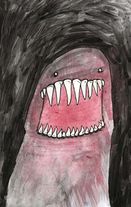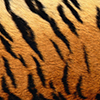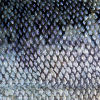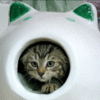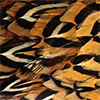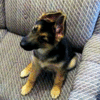Baby Seal
| Baby Seal | |
|---|---|
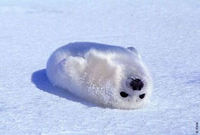 | |
| Scientific classification | |
| Kingdom | Hell |
| Phylum | Vicara |
| Class | Reptile |
| Order | Carnivora |
| Family | Phocidae |
| Genus | Evilius |
| Species | Embodidae |
| Binomial name | |
| Evilus embodidae | |
| Specifications | |
| Primary armament | Club |
| Secondary armament | Sith Lightning |
| Power supply | Satanic |
| Health | 1500 |
| Mana | 1200 |
| Strength | +650 |
| Intelligence | +500 |
| Weight | 15 kg |
| Length | 2-3 feet |
| Special attack | Column of Flame |
| Conservation status | |
| Endangering | |
The baby seal is a giant, mysterious reptile known for its sheer ferocity and malevolence. Located around Argentina and Los Angeles, they are one of the most elusive species known to man, though they can often be seen lounging in the bars along George Street in Sin Johns, Newfoundland. Most encounters have resulted in maiming, killing and raping, coining the nickname "Los Diablos" by natives of their habitats. Also, baby seals are made of tofu and half eaten slices of pita bread doused in gin.
Origins
A recent study of the baby seal DNA suggests extraterrestrial origin. According to xenobiology expert John "Don't quote me on this" Smith, "Their DNA has more in common with Martians than the more common great white seal. However, the correlation in both cases is so weak that they could well have come from somewhere else entirely."
Vikings first recorded the existence of baby seals at around 900 AD; however, ancient Inuit Art suggests discovery dating back to 899 AD. Baby seal fossils have never been discovered under the Arctic ice.
Behavior
Contrary to popular belief, baby seals are extremely intelligent creatures. Many survivors have experienced Identity theft. Baby seals are also famous for tax evasion and embezzlement. Baby seals are known to be extremely violent, often clubbing their enemies to death.
However, mildly retarded environmentalists denounce the baby seal's inherent tendency to violence, claiming these vicious spawns of hell are naturally inclined to being "cute and cuddly" and actually being the infant age of normal seals. It has been debated whether or not baby seals posses sufficient brain power to actually achieve mind control.
Baby seals are usually solitary creatures, preferring to live alone in uncharted parts of the Arctic. According to a census by the Canadian Ministry of Wildlife, over 3,000 baby seals live within Canadian borders. At the moment, Canada only possesses 300 nuclear warheads capable of dispatching these behemoth predators.

Reproduction
Baby seals can reproduce either asexually or sexually. In sexual reproduction, after mating, the female will cook the male to medium-rare and eat it alive. One female can yield about 12 offspring, which when born after about 5 or 6 months, will in turn eat the mother. The runt of the stock is usually eaten as well. Baby seals usually only take part in asexual reproduction only if there has been a famine, some sort of population detriment, or directly after a Canadian Agent Orange or nuclear strike.
Government
In 1984, Baby seal leaders created the Polar Republic, a vast yet unofficial empire not widely accepted outside its borders. The Polar Republic claims all land and water within the Arctic Circle as territory, which includes sections from countries such as Greenland, Canada, Russia and the United States. All diplomatic uproar from these countries has so far been met with violence, making the borders extremely disputed. Currently, the nation's only allies are Iran, North Korea, Venezuela, Vietnam and Newfoundland.
The Baby Seal hierarchy of power begins with the Plebeian Tribune, which consists of 24 members that propose laws and regulations to be passed onto the High Senate, which is primarily made up of Baby Seal nobles and elites. Three elected consulars oversee the activities of the tribune. The High Senate further revises the Plebeian laws and propose their own, and after a screening process and a majority vote, the to-be laws are passed to the three Consuls, who in addition to finalizing laws govern the feudal states of the Arctic Kingdom. At the top of the hierarchy sits the Dictator who accepts laws, and governs foreign affairs.
Uses
Although extremely dangerous, baby seals have several uses in multiple industries that benefit mankind.
Industrial
Several parts of the baby seal anatomy can be used for industrial purposes, for example the baby seal heart contains over 500 gigawatts of unused electric power (enough to power a city twice the size of Ottawa for almost 6 hours). Parts of the baby seal digestive system can also contain large amounts of unrefined natural gas. Reports of up to 5,000 pound/SqFt of gas found in the colon of a single beast have been recorded. This may also explain the baby seal's tendency to scream "Oh phoque" and then explode when exposed to extreme heat. Unfortunately, Canada is cold, harboring a hospitable climate for these foul creatures.
Pharmaceutical
The vitreous humor of the baby seal optical organ has recently been found to carry tiny antibiotic micro-organisms that theoretically can be used to kill dangerous bacteria and viruses that cause AIDS, Ebola, and several types of Cancer. However, most procedures of animal testing have proved inconclusive, as the baby seal antibodies tore the monkeys apart from the inside out, and then form another baby seal that destroys the lab in which it is being tested. The US government denies area 51 because of such an incident.
Controversy
Lately, environmentalists have been criticized for taking sides with the ruthless predators. Unfortunately the seals screwed over the environmentalists by eating them alive. Still, protesters have persisted in criticizing governments' poaching attempts, all signs still lead to the mind-controlling capabilities of baby seals.
Conflict
The War on Baby Seals
Since the end of World War II, The population of baby seals has experienced a dramatic increase in births. Overcrowding has forced the creatures to spread outward, invading countries such as Norway and Iceland, where previously baby seals tended to avoid and ignore completely. Over recent years, global warming has exacerbated the problem. As a result, Baby Seals have been causing reprehensible damage to these nations, prompting retaliation.
Major governments around the world have acted quickly to quell the growing baby seal threat, including Canada, in particular. Despite protests, Canada in alliance with Iceland have launched large military campaigns to the Arctic. Despite both countries' enormous deployment of troops, minimal success has been achieved in the ongoing War on Baby Seals.
Canada and the Baby Seals
The Three and 3/4 Year War
In 1956, tensions between Baby Seal tribes and the Canadian government had grown substantially from past years due mainly to illegal immigration. By then, baby seals had seized the provinces of Nunavut and most of the Northwest Territories, driving out 12 Canadian citizens from their homes. Despite warnings and small government and police retaliation, by the end of 1956 baby seals had captured most of the northern provinces cities, one such epic raid was the Massacre at Qamanittuaq, where over half off the cities' 1,500 inhabitants perished. Finally, In the spring of 1957, Canada declared war on the Baby seals and sent over 12,000 Canadian troops to attempt to retake the lost cities and drive the Baby seals out. What followed were some of the bloodiest battles in Canadian history, with substantial losses on each side. In the Battle of Baffin Island, 4,000 Canadian troops met 100 Baby seals at Iqaluit, resulting in 1,500 Canadian deaths. The troops' encounter with the baby seals was highlighted in the Canadian nonfiction, Cold: Journals from the Three Year War, a celebrated work of literature.
"When we were drafted, we had no idea what we were up against, or even what we were fighting. When we marched into Iqaluit, what we found were the most fearsome... creatures we had ever seen. They were huge, towering taller than the buildings with house-sized eyes darker than anything I had ever seen. When they were done with us, they killed the survivors and captured the rest... I was lucky enough to have been one of the few who had retreated."
Finally, in 1960, Canada managed to drive most of the baby seals out of its borders, resulting in a relative peace that would last another decade. After their defeat in Canada, The baby seals regrouped in Greenland and started building an organized retaliation force.
The Fall of Toronto
Between 1962 and 1972, the remaining tribes of baby seals set up in Greenland, massing forces to take revenge on Canada. During this period, Greenland was officially made one of the baby seal's Polar Territories. In fall 1973, the baby seals launched a massive attack on Ontario and Quebec, as well as Anchorage and Iceland, both of which had assisted Canada during the Three Year War. The multiple-front strike, dubbed "The White Surge" showed excellent military planning rivaling that of Nazi Germany's "Blitzkrieg".
The baby seals launched two fronts on the Canadian provinces, both from the sea. The First Front, consisting of 1,000 seals, swam from Greenland's west coast through the Hudson Bay and James Bay, continuing on land in a direct march to Ottawa and Toronto, capturing or destroying cites in its path. The Second Front, consisting of 2,001 baby seals, swam through the Labrador Sea, stopped for a lovely cup of tea and Jam-Jam cookies with Nan in Newfoundland and then swam up the Gulf of St. Lawrence straight to Toronto, capturing Quebec, Montreal and Ottawa on the way.
Over 501,000 Canadians perished during "The White Surge", which lasted five days. The surprise attack evaded Canada's primary defenses, which were stationed in the northernmost territories. After seven-day siege, 20,000 Canadian National Service units and 5,000 American National Guard troops arrived in Toronto assisted by the United States Air Force. A two week battle ensued with the Baby Seal Army surrendering due to lack of supplies.
Operation: White Dawn
After a second defeat against the Canadian Army, the Baby Seals retreated to the Polar Territories to rethink their strategy. This time, their goal was Vancouver, and from there a march to Seattle across the American border. Under the leadership of a new general, the Baby Seals formulated a new plan to infiltrate deep into Canada with minimal land and sea opposition. The plan was named Operation: White Dawn.
On December 7, 1985, a squadron of 300 Baby Seal drop-ships unleashed 13,000 baby seals on Vancouver. Again catching the Canadians off-guard, the baby seals descended on the city, killing over 300,000 Canadian civilians. Two days later, the Baby Seal Army marched for Seattle, ,where they were met by three hundred American National Guard troops holding their ground at the border, ambushing the several thousand baby seals as they made for the city. A three day battle ensued in the narrow mountain pass just outside Seattle, and all but one of the National Guard regiment perished. However, the small troop's sacrifice allowed the US army to collect forces and meet the invading Baby Seal force at the border. On December 12, the US forces managed to push back the Baby Seal Army before Seattle was wholly taken over. However, the United States victory came at an extreme cost; over 80,000 Seattle civilians perished during the battle.
Ongoing Conflict
After the Treaty of Nunavut in 1991 and the Polar Commonwealth's acceptance into NAFTA, the Baby Seals' attacks on Canada and the United States have decreased dramatically. However, rogue bands of Baby Seals have continued to terrorize Canadian outposts and towns, part of a jihad-like movement to take back the whole of Canada. The Baby Seal Army has also has failed to cease attacks on Iceland and Scandinavia, further straining diplomatic bonds with the Polar Kingdom and the EU.
